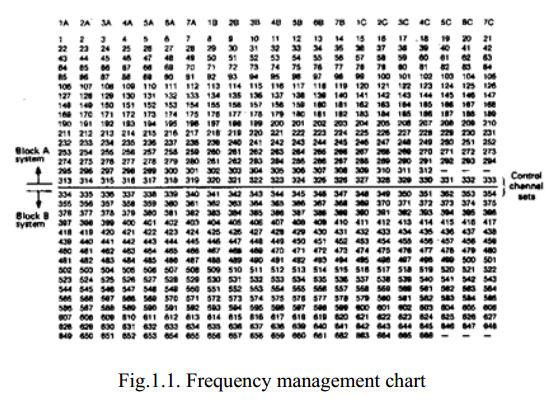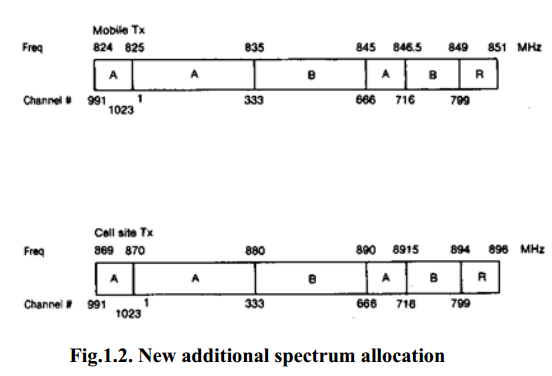Discuss the concept of frequency management concern to the numbering the channels and grouping into the subset.
1.Discuss the concept of frequency management concern to the numbering the channels and grouping into the subset.
Frequency Management:
The function of frequency management is to divide the total number of available channels into subsets which can be assigned to each cell either in a fixed fashion or dynamically (i.e., in response to any channel among the available channels). The terms “frequency management” and “channel assignment” often create some confusion. Frequency management refers to designating setup channels and voice channels (done by the FCC), numbering the channels (done by the FCC), and grouping the voice channels into subsets (done by each system according to its preference). Channel assignment refers to the allocation of specific channels to cell sites and mobile units. A fixed channel set consisting of one more subsets is assigned to a cell site on a long-term basis. During a call, a particular channel is assigned to a mobile unit on a short- term basis. For a short-term assignment, one channel assignment per call is handled by the mobile telephone switching office (MTSO). Ideally channel assignment should be based on causing the least interference in the system. However, most cellular systems cannot perform this way.
Numbering the channels:
The total number of channels at present (January 1988) is 832. But most mobile units an systems are still operating on 666 channels. Therefore we describe the 666 channel numbering first. A channel consists of two frequency channel bandwidths, one in the low band and one in the high band. Two frequencies in channel 1 are 825.030 MHz (mobile transmit) 870.030 MHz (cell-site transmit). The two frequencies in channel 666 are 844.98 MHz (mobile transmit) and 898 MHz (cell-site transmit). The 666 channels are divided into two groups: block A system and block B system. Each market (i.e., each city) has two systems for a duopoly market policy. Each block has 333 channels, as shown in Fig.1.1.
The 42 set-up channels are assigned as follows.
Channels 313-333 block A
Channels 334-354 block B
The voice channels are assigned as follows.
Channels 1-312 (312 voice channels) block A
Channels 355-666 (312 voice channels) block B
 |
| Frequency management chart |
These 42 set-up channels are assigned in the middle of all the assigned channels to facilitate scanning of those channels by frequency synthesizers. In the new additional spectrum allocation of 10 MHz (sec Fig. 1.2.), an additional 166 channels are assigned. Since a 1 MHz is assigned below 825 MHz (or 870 MHz) in the future, additional channels will be numbered up to 849 MHz (or 894 MHz) and will then circle back. The last channel number is 1023. There are no Channels between channels 799 and 991.
 |
| New additional spectrum allocation |
Grouping into subsets:
The number of voice channels for each system is 312. We can group these into any number of subsets. Since there are 21 set-up channels for each system, it is logical to group the 312 channels into 21 subsets. Each subset then consists of 16 channels. In each set, the closest adjacent channel is 21 channels away, as shown in Fig.1.1. The 16 channels in each subset can be mounted on a frame and connected to a channel combiner. Wide separation between adjacent channels is required for meeting the requirement of minimum isolation. Each 16- channel subset is idealized for each 16-channel combiner. In a seven- cell frequency-reuse cell system each cell contains three subsets, iA+iB+iC, where i is an integer from 1 to 7. The total number of voice
channels in a cell is about 45. The minimum separation between three subsets is 7 channels. If six subsets are equipped in an omni cell site, the minimum separation between two adjacent channels can be only three (21/6> 3) physical channel bandwidths.
For example,
1A+1B+1C+4A+4B +4C
or 1A+1B+1C+5A+5B+5C

